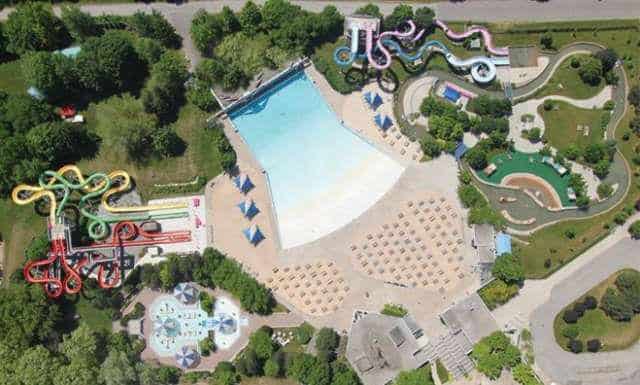Committee considers what the future holds for Hamilton’s Wild Waterworks
Published November 6, 2020 at 10:45 am

The future of Hamilton’s Wild Waterworks is currently under consideration and the city’s Emergency and Community Services Committee received an update on the possibilities this week.
At Thursday’s (Nov. 5) meeting, a staff report outlining the possible scenarios for the aging water park on Hamilton’s waterfront that were developed in consultation with one of Canada’s leading entertainment and amusement park design firms.
The four scenarios that the report focused on were:
Option 1 – Do Nothing ($5 M CDN.)
Annual attendance falls to 90,000 in 5 years.
Do nothing, consider the probable remaining life cycle of all facilities. Based on the market and feasibility analysis and estimated attendance, the overall size of Wild Waterworks would remain unchanged. Attendance would gradually decrease in the next 2-5 years falling well below 100,000. As infrastructure, rides and attractions continue to age and are taken out of service, it is expected that the park will become increasingly expensive to operate and would eventually be closed.
Option 2 – Replace Like for Like ($24.92 M CDN.)
Annual attendance increases to 120,000 in 5 years.
Replacement of existing rides, attractions and facilities with same/similar. Based on the market and feasibility analysis and estimated attendance, the overall size of Wild Waterworks would remain unchanged. Attendance will slowly increase over the average current attendance, increasing gradually over the next 2-5 years. The size of the water park will remain unchanged for this option as the current park area can generally accommodate the attendance with new building facilities and new rides.
Option 3 – Modest Enhancements ($40.14 M CDN.)
Annual attendance increases to 145,000 in 7 years.
Replacement of some rides, attractions, dryland climber, sheltered recreation area for adverse rain conditions, improved ticketing systems and Radiofrequency identification (RFID) wristbands. The water park size would need to be enlarged to accommodate increased annual (daily) attendance, as well as provide new rides and attractions for guests. Attendance will increase initially and stabilize after year 3 as a stabilized attendance level is achieved. This will require additional park area and an increased service level of rides and attractions and
expanded parking facilities.
Option 4 – New Design, New Program ($61.12 M CDN.)
Annual attendance increases to 185,000 in 7 years.
New design, rides and attractions and facilities to meet future guest needs and attendance. The water park size would need to be enlarged to accommodate increased annual (daily) attendance, as well as provide new rides and attractions for guests. Attendance will increase steadily over the next 5-8 years until a new stabilized attendance level is achieved. This will require additional park area and an increased service level of rides and attractions and expanded parking facilities.
According to the staff report, prepared by Romas Keliacius, of the City’s Recreation, Healthy and Safe Communities Department, the consultant’s preferred scenario is No. 3.
Further study is being done on the future of the park, which opened to the public in 1983, and much of that work will focus on the scenario that’s been singled out.
It is expected that the resulting report will come back in time for Hamilton’s 2022 operating budget.
Ward 5 councillor Chad Collins was concerned about the timing of this report, saying that it really couldn’t come at a worse time, in the middle of a pandemic, though he added there could be an advantage in terms of planning what comes next.
“Perhaps we could pursue opportunities [for funding] from other levels of government,” he said. “Are there opportunities with the private sector as well?”
Chris Herstek, who heads up the Rec department, assured Collins that in moving forward, staff will take those suggestions as direction and they will be included in the next report.
This past summer, Wild Waterworks remained closed to the public as the pandemic pushed its opening day so late in the season that it did not make fiscal sense, as well as concerns over the potential to attract large crowds of people.
During the summer, however, work was done on the park to ensure proper maintenance of the facility to prepare it for a time when people would be welcomed back.
In light of the current global situation, Collins noted that things will have to stay as they are for the time being.
“For the next two years, it’s status quo,” he said. “Nobody knows what the next year will hold in terms of the status of the pandemic. We could have a really hard decision to make.”
insauga's Editorial Standards and Policies advertising





